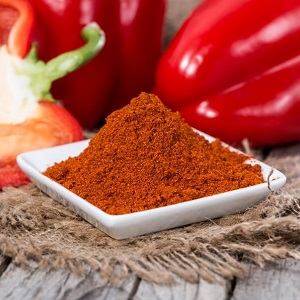- No. 268 Xianghe Street, Economic Development Zone of Xingtai city, Hebei 054001 China
- Byron@hbhongri.cn
Exploring Top Suppliers for Quality Chili and Paprika Spices in the Global Market
Chili and Paprika Suppliers A Fiery Flavor in Global Cuisine
Chili and paprika are two pivotal spices that have gained immense popularity in culinary traditions around the world. These vibrant ingredients not only add zest and color to dishes but also serve as vital sources of nutrition and health benefits. In recent years, the demand for high-quality chili and paprika has surged, spurring the growth of suppliers dedicated to this spicy niche. This article explores the landscape of chili and paprika suppliers, the benefits of sourcing these spices, and factors to consider when selecting a supplier.
The Importance of Chili and Paprika in Cuisine
Chili peppers and paprika are staples in many cuisines, adding distinct flavors and enhancing the overall sensory experience of food. Chili peppers, known for their varying heat levels, are used in everything from salsas to curries, while paprika, derived from ground bell peppers, adds sweetness, smokiness, and color to soups, stews, and sauces. Both spices are rich in vitamins A and C, making them not only flavor enhancers but also contributors to a healthy diet.
The Growing Demand for Quality Suppliers
As globalization allows cuisines to intermingle, the demand for authentic and high-quality chili and paprika has increased significantly. Gourmet chefs and home cooks alike are seeking suppliers who provide fresh, premium-grade spices. High-quality chili and paprika can elevate a dish from ordinary to extraordinary, and suppliers are focusing on sourcing their products from regions known for their rich agricultural heritage.
Countries such as Mexico, India, Hungary, and Spain have long histories of chili and paprika cultivation. The distinct flavor profiles and varieties from these regions make them highly sought after in the global market. For instance, Mexican chilies like Ancho and Guajillo are known for their rich, deep flavors, while Hungarian paprika is celebrated for its vivid color and balanced sweetness. Suppliers specializing in these specific varieties have a competitive edge, attracting chefs eager to recreate authentic dishes.
Sourcing Considerations for Chili and Paprika
chilli and paprika suppliers

When selecting a chili and paprika supplier, several key factors should be considered to ensure the best products
1. Quality and Freshness Verify that the supplier prioritizes the quality and freshness of their spices. Look for suppliers who carry organic or sustainably sourced options, as these can provide superior flavor and health benefits.
2. Variety and Range Suppliers should offer a range of chili and paprika varieties to cater to diverse culinary needs. Whether one is looking for mild bell pepper powders or fiery ghost chili, a broad selection ensures that chefs can find exactly what they need.
3. Provenance Understanding the origin of the spices is essential. Suppliers who can trace their products back to specific farms or regions often provide a greater assurance of quality. It also allows consumers to appreciate the unique characteristics associated with each region.
4. Reputation and Reviews Researching a supplier’s reputation within the culinary community can provide insights into their reliability and product quality. Customer reviews, testimonials, and industry awards can serve as indicators of a trusted supplier.
5. Sustainability Practices In today’s environmentally conscious market, it’s important to consider suppliers who implement sustainable farming and sourcing practices. This not only supports the community of farmers but also aligns with the growing demand for ethically produced food products.
Conclusion
As the culinary world continues to evolve, the role of chili and paprika suppliers remains crucial in delivering quality ingredients that inspire creativity in the kitchen. For those seeking authentic flavors and high-quality spices, a well-chosen supplier can make all the difference. Embracing the fiery flavors of chili and paprika not only enriches dishes but also connects cooks and consumers to a rich tapestry of cultures and traditions, all bound together by the universal language of food.
-
Turmeric Rhizome Powder: A Golden Treasure from Roots to TableNewsJul.28,2025
-
The Versatile Application Of Crushed Red Hot Peppers: Lighting Up The Red Flames On The Dining TableNewsJul.28,2025
-
The Paprika: A Touch Of Vibrant Red In Color, Flavor, And CultureNewsJul.28,2025
-
Ground Turmeric: A Modern Examination of an Ancient SpiceNewsJul.28,2025
-
Capsicum Liquid Extract: Features, Applications, and ChallengesNewsJul.28,2025
-
Application of Capsicum Liquid Extract in FoodNewsJul.28,2025







